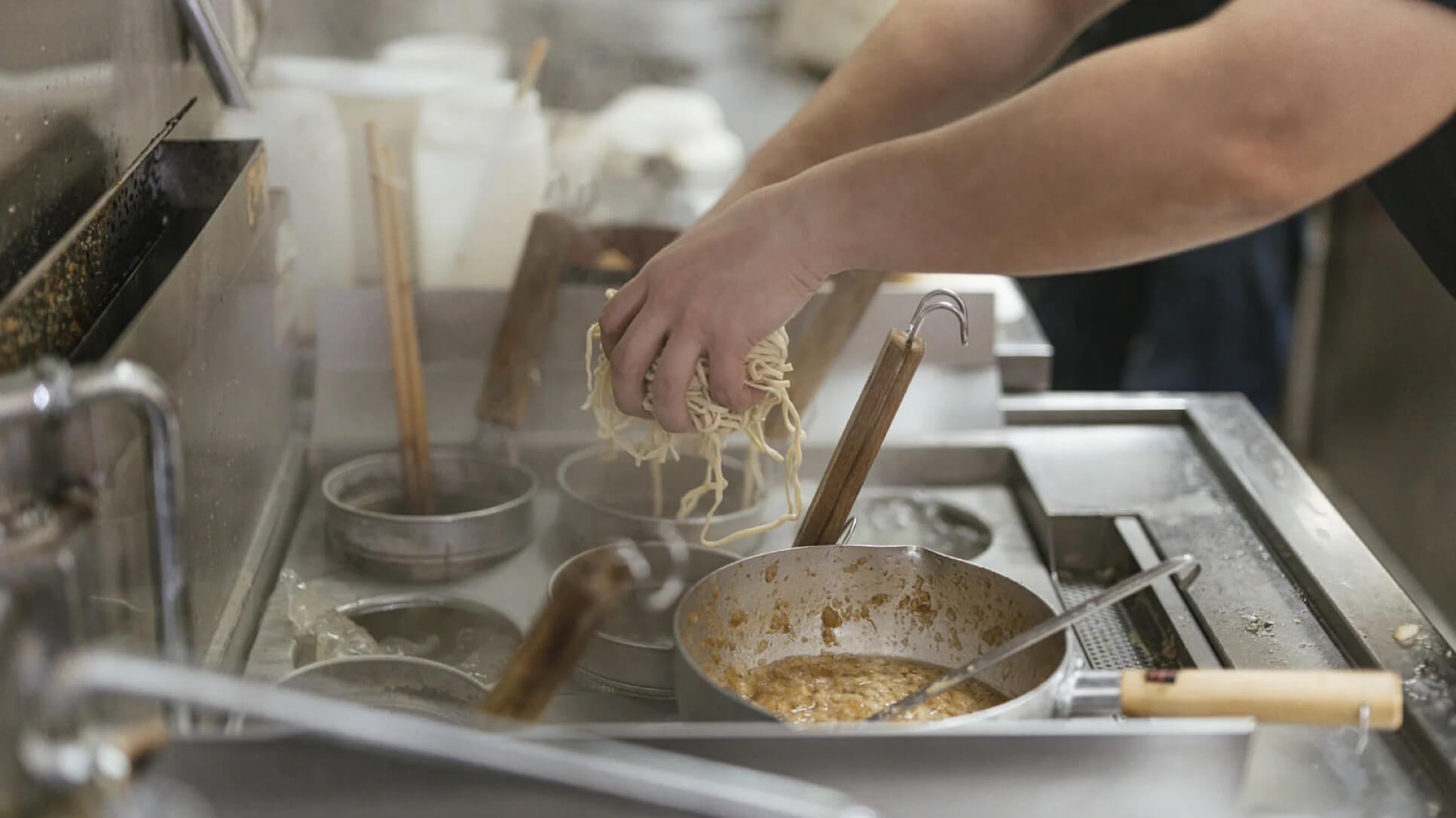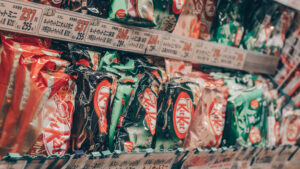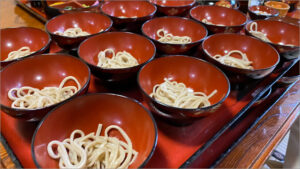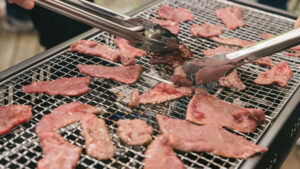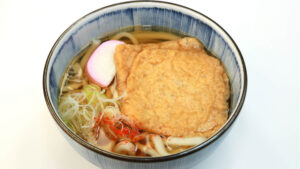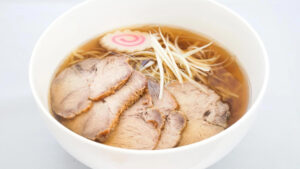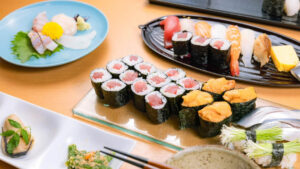For travelers visiting Japan, ramen—an icon of the country’s food culture—is a must-try experience. However, independent shops vary widely in flavor and style, which can feel intimidating for first-timers. That’s when nationwide ramen chains come in handy. They offer consistent taste and service wherever you go, straightforward ordering systems, and easy, hassle-free dining during your trip. In this article, we’ll explore what makes nationwide ramen chains ideal for beginners, highlight representative brands, and share practical ordering tips.
Contents
The Appeal of Japan’s Nationwide Ramen Chains
One of the greatest appeals of Japan’s nationwide ramen chains is that you can enjoy consistently high-quality ramen no matter where you go. For both tourists and first-time visitors to Japan, these chains are a safe choice with little risk of disappointment in taste or service. Many offer authentic flavors at reasonable prices, making them easy to visit even with limited travel time. In some cases, individual locations add subtle regional touches, allowing you to experience small variations within the same chain.
Enjoy the Same Flavor Anywhere in Japan
Ramen chains maintain consistent quality by using standardized recipes and cooking manuals across all their locations. This means you can enjoy nearly the same taste in Tokyo as in Hokkaido. For travelers, the assurance that “it’s delicious no matter where you eat it” is a big comfort, especially in unfamiliar areas where finding a meal might otherwise be a challenge.
Consistency and Reproducibility of Flavor
Nationwide ramen chains control the production of their broth and noodles in centralized factories before delivering them to each store. This system minimizes differences between locations, ensuring that even first-time customers can experience the same quality they have enjoyed before. For international visitors, this consistency is a reassuring guarantee of a satisfying meal.
Peace of Mind Knowing You Can Find It Even in Rural Areas
Well-known ramen chains operate not only in major cities but also in shopping malls and near major train stations in rural areas. They are easy to find in tourist spots and small towns, making them a convenient option even during long journeys. For overseas visitors, spotting a familiar brand in an unfamiliar countryside setting offers a sense of comfort and confidence to step inside.
A Convenient Choice During Travel
While sightseeing or traveling, there are many times when you need to finish your meal quickly. Ramen chains are ideal in these situations thanks to their short preparation times and high turnover rates, allowing you to enjoy a tasty meal without a long wait. Many locations also offer foreign-language menus or picture menus, making ordering easy even for first-time visitors.
Variety of Menu Options
Japanese ramen chains are attractive not only for their signature ramen but also for their wide range of menu items. From the classic flavors of shoyu (soy sauce), miso, shio (salt), and tonkotsu (pork bone) to seasonal, limited-time creations, there’s always something new to try, keeping your visits exciting. In addition, many chains allow a high degree of customization with toppings, enabling you to create a bowl that perfectly suits your taste—a special experience for international travelers.
Signature Ramen and Limited-Time Offerings
Many ramen chains have signature bowls that have been loved for years. These recipes are carefully standardized, ensuring the same taste at every location. Another highlight is their seasonal limited-time menus. In summer, you might find chilled ramen or yuzu-flavored bowls, while in winter, rich miso or spicy varieties are popular. These seasonal dishes use ingredients unique to the time of year, offering the fun of trying different flavors depending on when you travel.
Side Dishes and Set Menus
At ramen chains, it’s not just about the noodles—side dishes like gyoza, fried chicken, and fried rice are also favorites. Many locations offer value sets combining ramen with a side, making for a well-balanced meal. Options like small rice bowls or mini donburi are also common, giving customers the flexibility to match their order to their appetite and budget.
Convenience and Accessibility
Japanese ramen chains are designed for convenience, making them popular among both tourists and business travelers. Many are located near train stations or transportation hubs, allowing for quick stops between activities. Simple ordering systems, such as ticket machines, and multilingual support ensure that even first-time visitors can dine without confusion.
Locations Near Stations and Along Major Roads
Nationwide ramen chains are often found near train stations in urban areas and along major roads or inside shopping malls in rural regions. This makes it easy to grab a meal right after getting off a train or bus, or to stop by while traveling by car. Their strategic locations make them convenient options during travel breaks.
Ticket Machines and Ordering Systems
Many ramen chains use ticket machines at the entrance, where customers select their meal and hand the ticket to staff. This system speeds up payment and shortens wait times even during busy hours. In recent years, more locations have introduced tablet-based ordering and cashless payment options, making the process easier for international travelers.
English Menus and Multilingual Support
With the rise in foreign visitors, many ramen chains now offer menus in English, Chinese, and Korean. Picture menus are also common, allowing customers to order confidently without understanding Japanese. In some locations, staff members can communicate basic English, ensuring a comfortable dining experience for first-time visitors to Japan.
Recommended Nationwide Ramen Chains
Ippudo
Founded on October 16, 1985, in Daimyo, Chuo Ward, Fukuoka City, Ippudo is a celebrated Hakata-style tonkotsu ramen restaurant. Since its inception, it has upheld the philosophy of “one bowl of ramen for one customer,” aiming to become a “future long-standing establishment” as it approaches its 50th anniversary in 2035 and its centennial in 2085. The restaurant design blends traditional and creative elements—wooden signs reminiscent of Kyoto’s historic shops, hand-dyed noren curtains, interiors resembling a woodcarver’s studio, and custom-made bowls from master potters. Jazz music fills the air, and staff in samue attire greet guests, creating an extraordinary dining atmosphere. The design concept is rooted in the Five Elements theory—wood, fire, earth, metal, and water—emphasizing harmony. The signature “Shiromaru Motoaji” has been served since the restaurant’s founding, featuring silky tonkotsu broth seasoned with a salt-based tare and lard, paired with thin, firm noodles and topped with tender pork loin char siu prepared using shio-koji and low-temperature cooking. This simple yet deeply flavorful ramen continues to captivate fans worldwide.
Ichiran
Ichiran is dedicated to serving tonkotsu ramen at its very best through meticulous temperature and quality control. Bowls are always preheated to maintain soup temperature, while broth and oils are kept at optimal heat and measured every four hours. Chashu is only warmed in small portions using specialized equipment, and any cooled meat is discarded. Additional toppings are served separately to ensure they remain at the ideal temperature until the last moment. Presentation is never compromised—when a dish is plated beautifully, chefs praise each other to hone their skills. Orders are remade without hesitation if there’s any mistake. The 100% pork bone broth is prepared using a special method to remove unwanted odors, with concentration, flavor, and aroma checked by both expert taste and precise instruments; any batch that falls short is remade from scratch. In-store, noodles are added within 30 seconds of pouring the soup, following a strict rule. Ichiran’s unique “Flavor Concentration Booth” seating system lets customers dine without distraction, helping them transition from a tense state (sympathetic nervous dominance) to a relaxed state (parasympathetic dominance), which enhances flavor perception. This private and focused environment is especially popular among women and celebrities.
Kourakuen
Kourakuen strives to deliver “the same delicious taste anytime, anywhere” by standardizing flavor through an advanced kitchen system and a Meister certification program. Their hospitality philosophy emphasizes serving “hot dishes hot and cold dishes cold,” supported by a service manual that shares the basics and encourages hospitality that goes beyond the manual—with a constant smile. Cleanliness and hygiene are a top priority, aiming to be the cleanest restaurant in the region. Since its founding in 1954, Kourakuen has refined its flavor with high-density, multi-hydration aged noodles and a triple soup base. The company carefully inspects contract farms and oversees transportation methods to ensure safety, even avoiding the use of metal pins in cabbage shipments. Partner manufacturers are also monitored for strict temperature and process control. The popular gyoza are made with sweet cabbage from contracted farms, wrapped in crispy skins that perfectly complement the savory filling. The beloved “Han-Chan Ramen” set features fried rice that is fluffy yet slightly chewy, with each grain separate and aromatic—a dish that continues to evolve.
Ramen Kagetsu Arashi
Since its founding in 1992, Ramen Kagetsu Arashi has embraced the concept of “Ramen × Entertainment ☆ Surprise!!” to share the charm of ramen with the world. Centered around its signature “Arashi Genkotsu Ramen,” the chain offers new limited-time ramen varieties every month and engages in diverse collaborations, continually presenting fresh ways to enjoy ramen. Its No. 1 bestseller, “Arashi Genkotsu Ramen” (¥920 including tax), is a back-fat shoyu ramen with a tonkotsu base. The key to its flavor lies in a matured secret tare sauce, creating a rich yet mellow depth. The savory back fat blends harmoniously with the deep flavor of the broth, achieving a perfect balance with the noodles and toppings. Kagetsu Arashi sees ramen not just as a meal but as entertainment, pouring effort into developing menus that deliver surprise and delight. As ramen has become a global cuisine, the chain continues to challenge itself to bring it to more people in ever more creative forms.
Tenkaippin
Established in 1971 by founder Tsutomu Kimura, Tenkaippin began as a food stall and, after three years and nine months of trial and error, perfected its famous “kotteri” thick soup. Made by slowly simmering chicken bones and vegetables, the soup is often described as something you “eat” rather than “drink,” offering a rich consistency with a surprisingly clean aftertaste. Using about 16,000 kilograms of chicken bones daily, the broth achieves a depth of flavor that never becomes tiring. The noodles are crafted from a carefully selected wheat blend and finished through multi-hydration aging, giving them a distinctive taste and texture. Alongside its signature “Kotteri,” the menu features “Assari,” a clear yet flavorful broth, “Yatai no Aji” as a middle ground between the two, “Kotteri MAX” for maximum umami, and a miso ramen blending red and bean miso. For over half a century, Tenkaippin has proudly preserved its unique flavor, and its one-of-a-kind soup continues to captivate ramen lovers everywhere.
Menya Musashi
Founded in 1996 and opening its flagship store in June 1998, Menya Musashi is known for its signature “double soup” (nitoryu soup) that blends an animal-based broth made from chicken bones and pork bones with a seafood broth made from bonito flakes and dried sardines. At the time of its founding, many ramen shops prioritized flavor but neglected service and hygiene. Menya Musashi aimed to be a ramen shop that delivers the joy of eating, placing equal importance on hospitality and cleanliness. The brand believes that a customer’s “delicious” verdict comes not only from the flavor but from the entire in-store experience, and that sincerity in work is the essence of great taste. Guided by the philosophy of “innovation with quality,” Menya Musashi continually pursues new challenges and quality improvements. It sees staff growth as the source of both innovation and quality, contributing to personal fulfillment. Rather than focusing on rapid expansion, the company prioritizes refining stores that bring joy to customers. Menya Musashi will continue evolving with a focus on balancing flavor and service.
Ordering Tips to Know Before Visiting Japan
Ramen shops in Japan often have unique ordering methods that differ from restaurants in other countries. Knowing these in advance will help you enjoy a smoother dining experience. Nationwide ramen chains in particular are well-prepared for beginners, with ticket vending machines, customizable orders, and multilingual menus. Here are some key tips to keep in mind before your visit.
How to Use a Ticket Vending Machine
At many Japanese ramen chains, customers place their orders using a ticket vending machine located near the entrance. You purchase your meal ticket before sitting down, then hand it to the staff to complete your order. This system helps keep service quick and efficient, even during busy times. While the process is simple, first-time visitors may find it helpful to understand the steps in advance.
Using the Touchscreen Menu
Many modern ticket machines feature a touchscreen displaying menu photos and prices. Simply select your preferred dish, press the button, and pay with cash or a cashless method to receive your meal ticket. Menus are often organized by categories or set options, making it easy to find what you want.
Cash and Cashless Payment Options
Traditionally, ticket machines only accepted cash, but more now support credit cards, IC cards (such as Suica or PASMO), and QR code payments. If paying with cash, having coins ready will make the process smoother. In cashless-enabled locations, some machines also accept overseas-issued cards and mobile payment services.
Switching to English or Other Languages
In tourist areas and major cities, many ticket machines have a language-switch button for English, Chinese, or Korean. By selecting your preferred language, you can easily navigate the menu with both text and images, ensuring a stress-free ordering experience—even on your first visit.
Toppings and Customization
At Japanese ramen chains, you can do more than just choose your soup and noodle type—you can customize your bowl to suit your preferences. Options often include adjusting noodle firmness, soup richness, spiciness, and adding extra toppings. This level of personalization is especially appealing to international visitors, as such detailed flavor adjustments are less common in many other countries.
Choosing Noodle Firmness
Many shops allow you to choose how firm your noodles are cooked. In Hakata-style tonkotsu ramen, common options include “barikata” (very firm), “normal,” and “soft.” Firmer noodles have a chewier texture and a distinctive way of holding the broth. If it’s your first time, starting with “normal” is recommended, and you can adjust on future visits based on your taste.
Adjusting Spiciness and Soup Richness
Some chains let you choose the saltiness or richness of the broth, as well as the level of spiciness. If you’re sensitive to heat, opt for a mild spice level, while those who enjoy bold flavors might prefer a richer or saltier broth. Tourist-friendly locations often offer spice levels in several stages, allowing you to experiment and find your perfect balance.
When to Order Extra Noodles or Toppings
Many ramen shops allow you to order extra noodles (kaedama) or toppings while eating. If you plan to get kaedama, it’s best to let the staff know when you’ve eaten about half of your noodles so the extra portion arrives without delay. Additional toppings such as seasoned eggs or slices of chashu can also be ordered mid-meal, making it easy to enhance your bowl as you go.
Dining Etiquette and Tips
Ramen shops in Japan have certain dining customs and unspoken rules that may differ from those in other countries. Knowing these will help you enjoy your meal more comfortably and leave a positive impression on staff and fellow customers. Even at nationwide chains, the basic expectation is to finish your meal efficiently and courteously, especially during busy times.
It’s Okay to Slurp Your Noodles
In Japan, slurping noodles is not considered rude—in fact, it’s the standard way to eat ramen. Slurping draws in air along with the noodles, allowing you to enjoy the aroma of the broth and enhancing the flavor. While in some countries slurping may be frowned upon, in Japan you can enjoy your meal without worrying about it.
How to Drink the Soup
Ramen soup can be sipped directly from the bowl or with a renge (soup spoon). You are not expected to drink it all, as the broth is often rich and high in salt. Feel free to drink as much as you like. Finishing the broth entirely is sometimes seen as a compliment to the chef, signaling that you thoroughly enjoyed the dish.
Sharing Seats During Busy Times
Popular ramen shops can become crowded, especially at lunchtime. As a courtesy, it’s considered good manners to give up your seat promptly once you’ve finished eating, rather than lingering. Nationwide chains value quick table turnover, so settling your bill and leaving smoothly after your meal will be appreciated by both staff and waiting customers.
Enjoy Japan’s Flavors Easily and Comfortably at Nationwide Ramen Chains
Nationwide ramen chains offer the comfort of consistent taste and service no matter where you are in Japan. With diverse menus, customizable options, convenient locations, and multilingual support, they are designed to be traveler-friendly. Many chains also have unique specialties and limited-time dishes, making them an easy way to experience Japanese food culture. Even if it’s your first time visiting Japan, these chains provide a reliable and delicious way to enjoy ramen with confidence.
